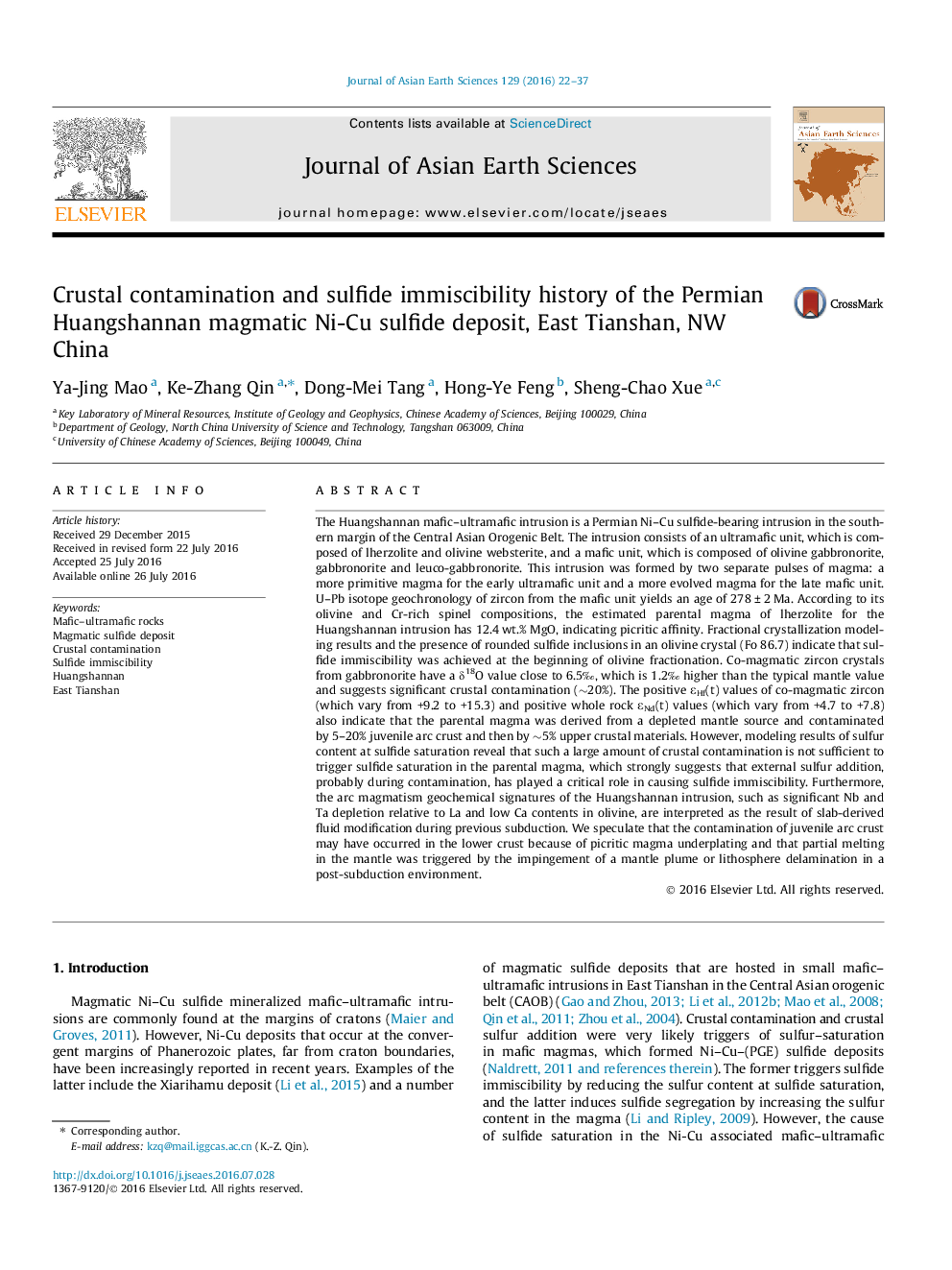| کد مقاله | کد نشریه | سال انتشار | مقاله انگلیسی | نسخه تمام متن |
|---|---|---|---|---|
| 4729934 | 1640342 | 2016 | 16 صفحه PDF | دانلود رایگان |

• The Permian Huangshannan deposit was formed by picritic magmas with 12.4 wt.% MgO and ∼450 ppm Ni.
• The parental magma was contaminated by 5–20% juvenile lower crust and ∼5% upper crustal materials.
• Sulfide saturation in the Huangshannan deposit was triggered by external crustal sulfur addition.
• The primary magma was derived from a slab fluid-modified depleted mantle.
The Huangshannan mafic–ultramafic intrusion is a Permian Ni–Cu sulfide-bearing intrusion in the southern margin of the Central Asian Orogenic Belt. The intrusion consists of an ultramafic unit, which is composed of lherzolite and olivine websterite, and a mafic unit, which is composed of olivine gabbronorite, gabbronorite and leuco-gabbronorite. This intrusion was formed by two separate pulses of magma: a more primitive magma for the early ultramafic unit and a more evolved magma for the late mafic unit. U–Pb isotope geochronology of zircon from the mafic unit yields an age of 278 ± 2 Ma. According to its olivine and Cr-rich spinel compositions, the estimated parental magma of lherzolite for the Huangshannan intrusion has 12.4 wt.% MgO, indicating picritic affinity. Fractional crystallization modeling results and the presence of rounded sulfide inclusions in an olivine crystal (Fo 86.7) indicate that sulfide immiscibility was achieved at the beginning of olivine fractionation. Co-magmatic zircon crystals from gabbronorite have a δ18O value close to 6.5‰, which is 1.2‰ higher than the typical mantle value and suggests significant crustal contamination (∼20%). The positive εHf(t) values of co-magmatic zircon (which vary from +9.2 to +15.3) and positive whole rock εNd(t) values (which vary from +4.7 to +7.8) also indicate that the parental magma was derived from a depleted mantle source and contaminated by 5–20% juvenile arc crust and then by ∼5% upper crustal materials. However, modeling results of sulfur content at sulfide saturation reveal that such a large amount of crustal contamination is not sufficient to trigger sulfide saturation in the parental magma, which strongly suggests that external sulfur addition, probably during contamination, has played a critical role in causing sulfide immiscibility. Furthermore, the arc magmatism geochemical signatures of the Huangshannan intrusion, such as significant Nb and Ta depletion relative to La and low Ca contents in olivine, are interpreted as the result of slab-derived fluid modification during previous subduction. We speculate that the contamination of juvenile arc crust may have occurred in the lower crust because of picritic magma underplating and that partial melting in the mantle was triggered by the impingement of a mantle plume or lithosphere delamination in a post-subduction environment.
Figure optionsDownload as PowerPoint slide
Journal: Journal of Asian Earth Sciences - Volume 129, 1 November 2016, Pages 22–37